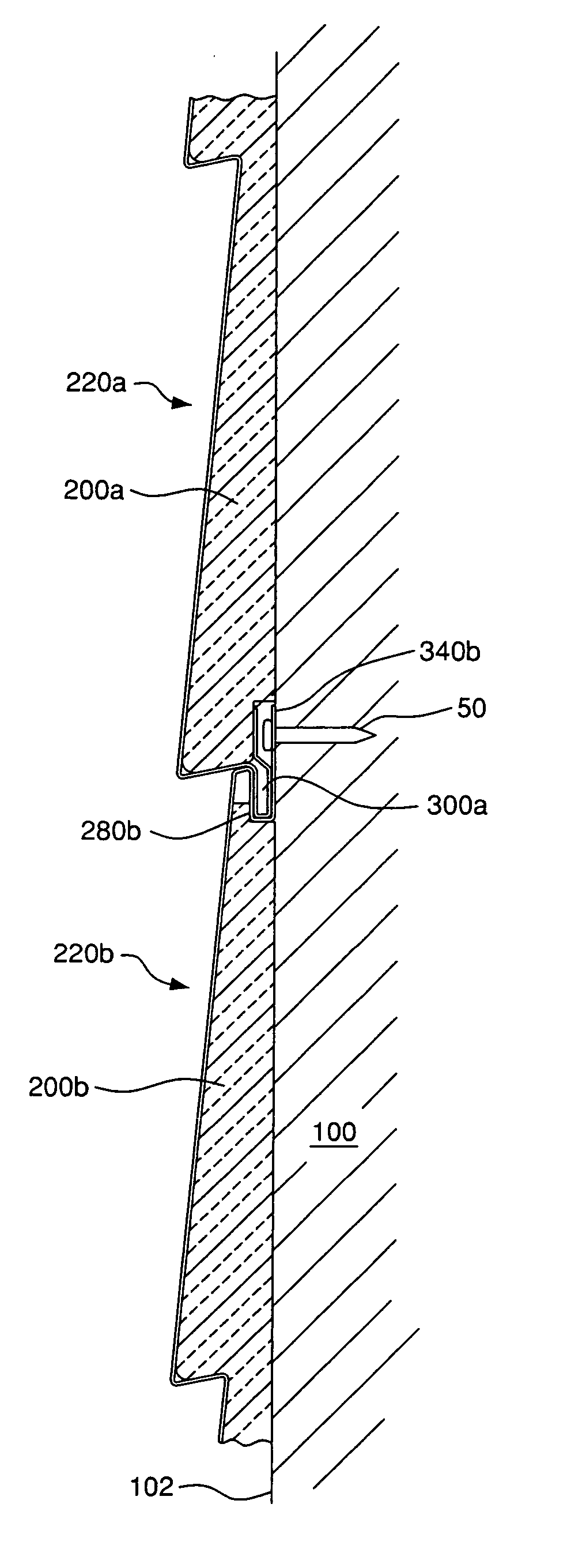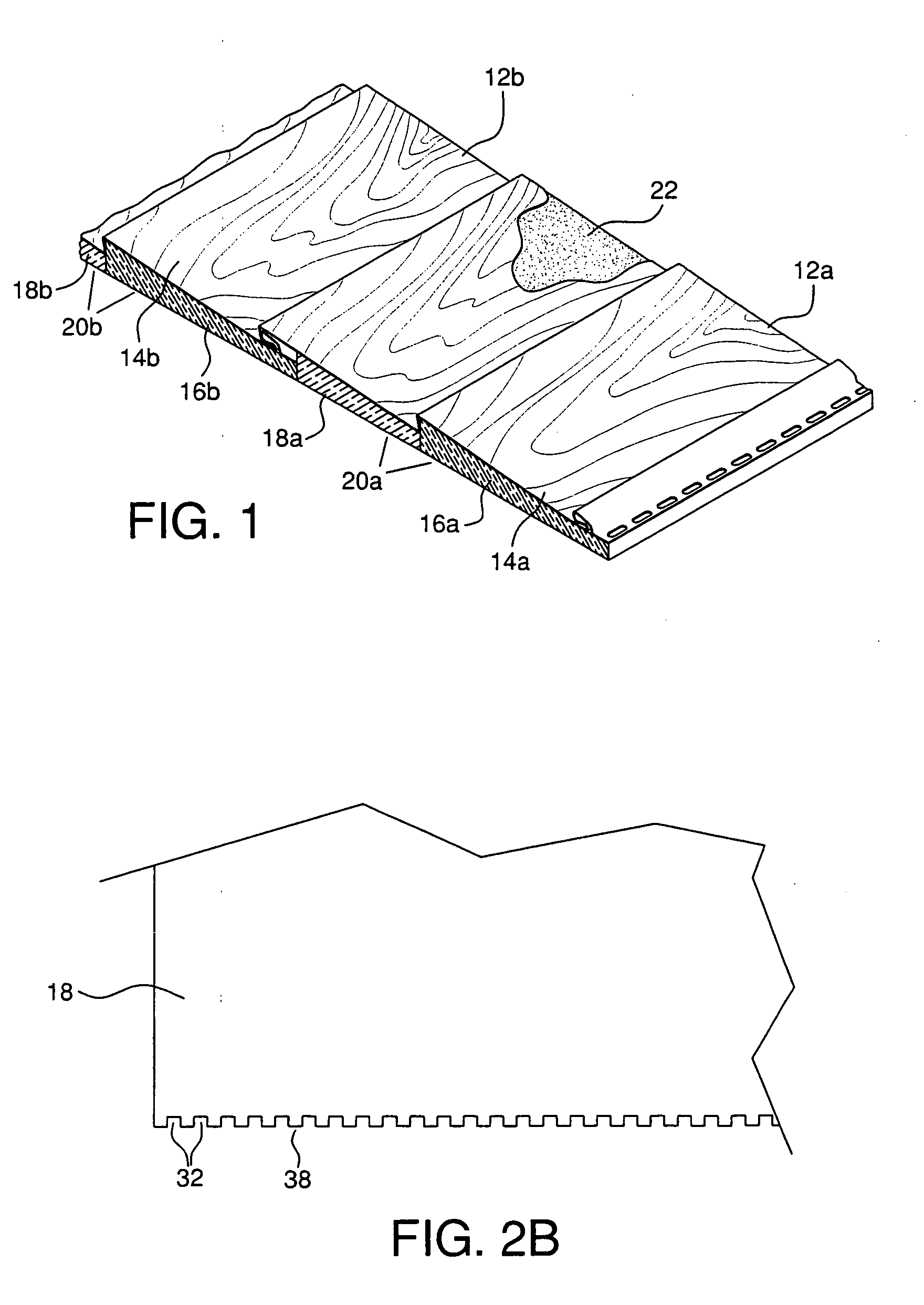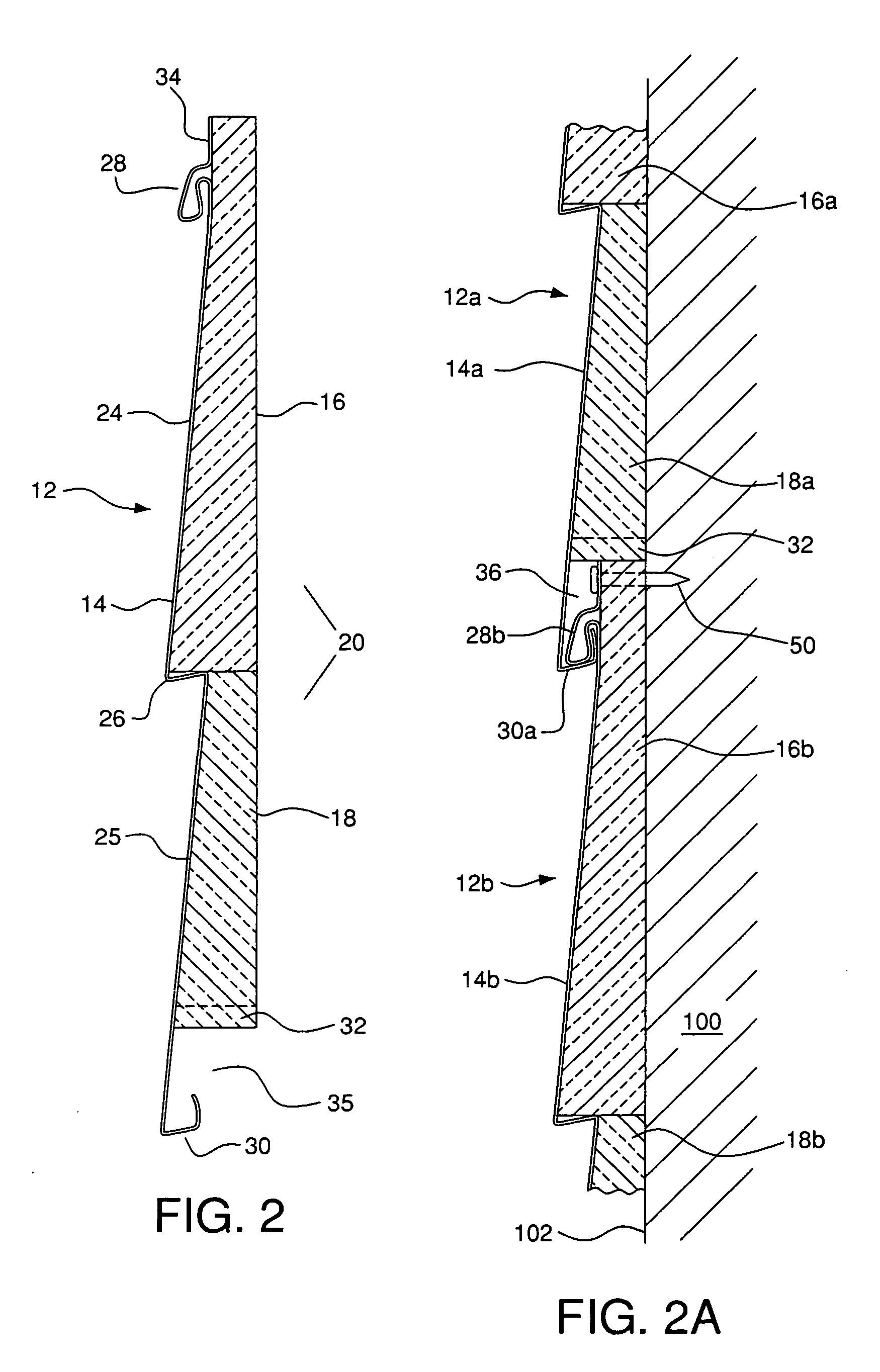Moisture diverting insulated siding panel
a technology of insulating siding panels and moisture-distributing layers, which is applied in the direction of water-setting substances layered products, transportation and packaging, and other domestic articles, can solve the problems of limiting the ability of siding veneers to successfully weep away moisture, significant damage to wall systems and building structures, and affecting the performance of insulation and acoustic insulation, so as to reduce scrap waste, improve handling and assembly, and reduce thermal and acoustic insulation performance
- Summary
- Abstract
- Description
- Claims
- Application Information
AI Technical Summary
Benefits of technology
Problems solved by technology
Method used
Image
Examples
Embodiment Construction
[0022] Provided herein is an improved insulation product comprising a thin walled polymeric siding panel and an insulation backing coupled thereto. FIG. 1 is a partial perspective view showing two coupled insulation products 12a, 12b according to a first embodiment. As can be seen from FIG. 1 and as described in more detail in connection with FIGS. 2 and 2A, each insulation product 12a, 12b includes a respective siding panel 14a, 14b coupled, in a preferred embodiment, by an adhesive 22 to respective insulation backing 20a, 20b. The panels can be coupled to insulation members, such as layers, panels, boards or coatings (hereinafter collectively referred to as “members”), for example. In the embodiment shown in FIG. 1, each insulation backing 20a, 20b comprises a plurality of insulation members 16a, 18a and 16b, 18b, respectively, which are described in more detail below in connection with FIGS. 2 and 2A.
[0023]FIG. 2 is a profile view of an individual siding panel product 12 shown i...
PUM
| Property | Measurement | Unit |
|---|---|---|
| angle | aaaaa | aaaaa |
| depth | aaaaa | aaaaa |
| depth | aaaaa | aaaaa |
Abstract
Description
Claims
Application Information
 Login to View More
Login to View More - R&D
- Intellectual Property
- Life Sciences
- Materials
- Tech Scout
- Unparalleled Data Quality
- Higher Quality Content
- 60% Fewer Hallucinations
Browse by: Latest US Patents, China's latest patents, Technical Efficacy Thesaurus, Application Domain, Technology Topic, Popular Technical Reports.
© 2025 PatSnap. All rights reserved.Legal|Privacy policy|Modern Slavery Act Transparency Statement|Sitemap|About US| Contact US: help@patsnap.com



